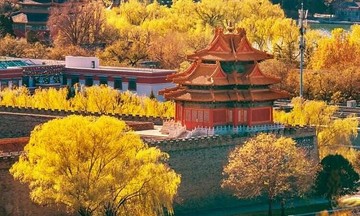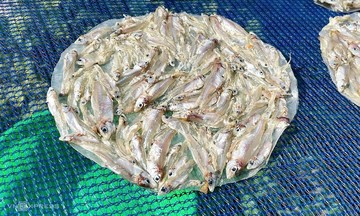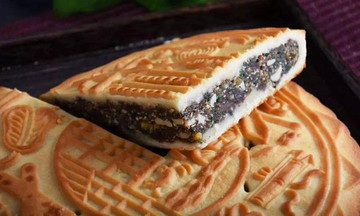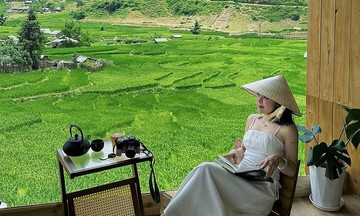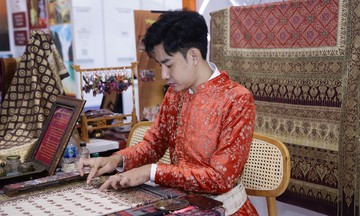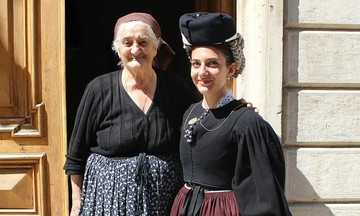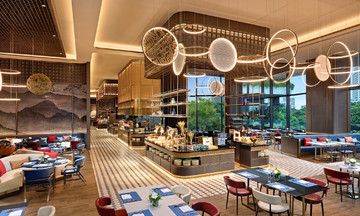Around 6 a.m. every day, 53-year-old Le Van Tuan sets up his glass display case, pots, and trays on the corner of 9A Street in Long Binh ward, preparing to sell his sticky rice. The pot is full of eye-catching glutinous rice in a rainbow of colors.
The middle-aged man skillfully scoops sticky rice, spreads the filling, rolls it in a rice paper wrapper, and ties it neatly with dried pandan leaves. Tuan was born in Ho Chi Minh City and worked in an office in Buon Ma Thuot for a while, but it wasn't a good fit. In 2019, after learning the trade from a friend in Ca Mau, he decided to dedicate himself to seven-color sticky rice. His stall quickly gained popularity, with customers lining up every morning after it became famous on social media.
Tuan has been selling seven-color sticky rice for about a month, and people are starting to take notice. Photo: Quynh Tran
"'>
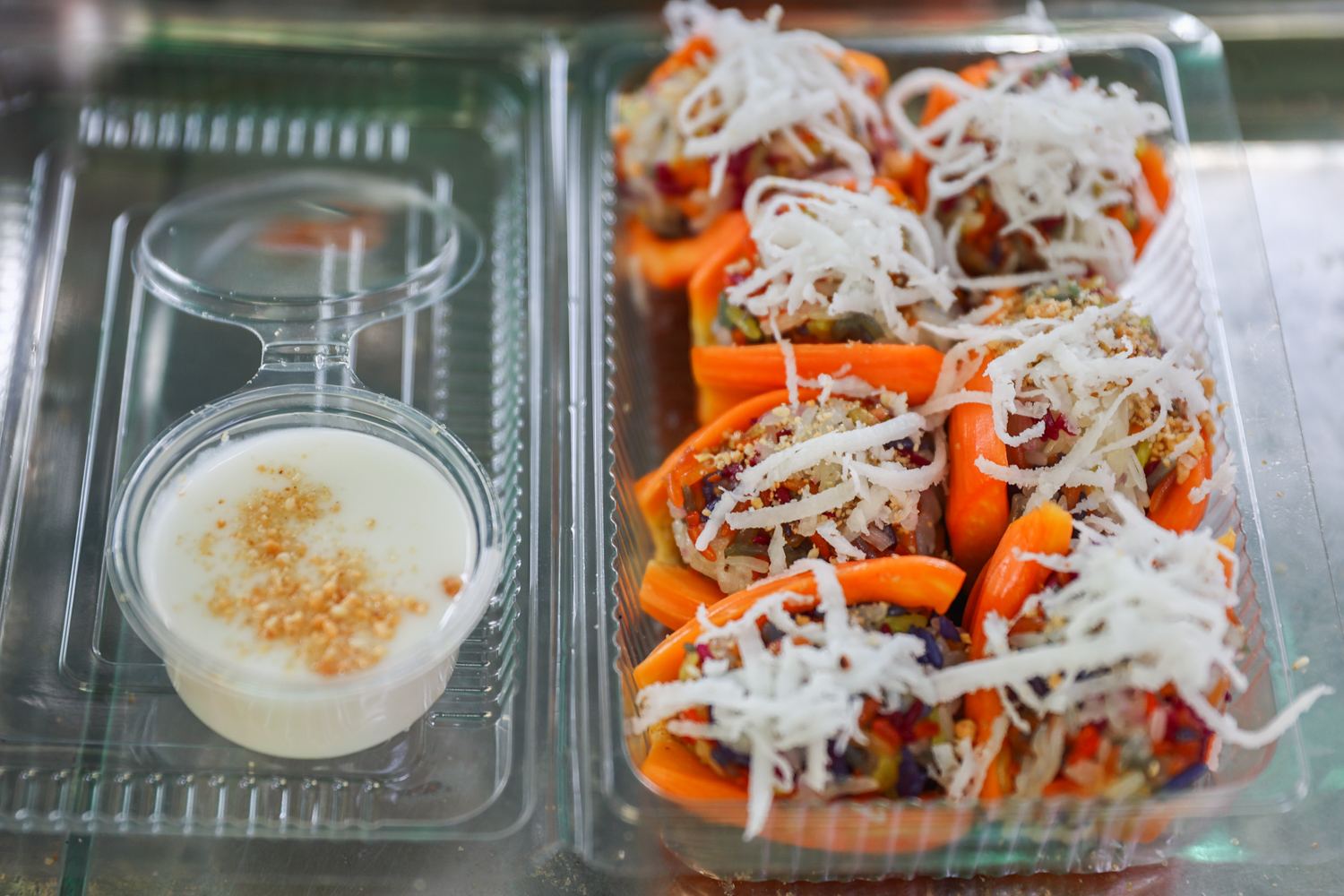 |
The vibrant colors of the sticky rice are made from natural ingredients, wrapped in rice paper, and tied with pandan leaves. Photo: Quynh Tran |
Recently, Tuan returned to Ho Chi Minh City to receive medical treatment and care for his mother, who is over 80 years old. He brought his seven-color sticky rice stall with him. "I've only been selling here for about a month, and it's not crowded yet, but everyone who tries it comes back. Gradually, more people will discover it," he said.
The original seven-color sticky rice is served with durian, but Tuan has created other fillings such as lotus seeds, taro, cade, jackfruit, and salted egg. The appeal lies in each portion's vibrant colors: yellow, purple, white, red, green, and more, making it a visual feast. "I don't use artificial colors, but natural ingredients to create the colors for the dish," Tuan explained.
The long-grain Thai sticky rice is soaked overnight in various leaves, flowers, and fruits to create the colors. The original white comes from the glutinous rice itself, dark blue from butterfly pea flowers, yellow from gardenia fruit, red from red sticky rice, purple from magenta leaves, and reddish-orange from gac fruit. To achieve a bright green, he mixes gardenia fruit and butterfly pea flowers.
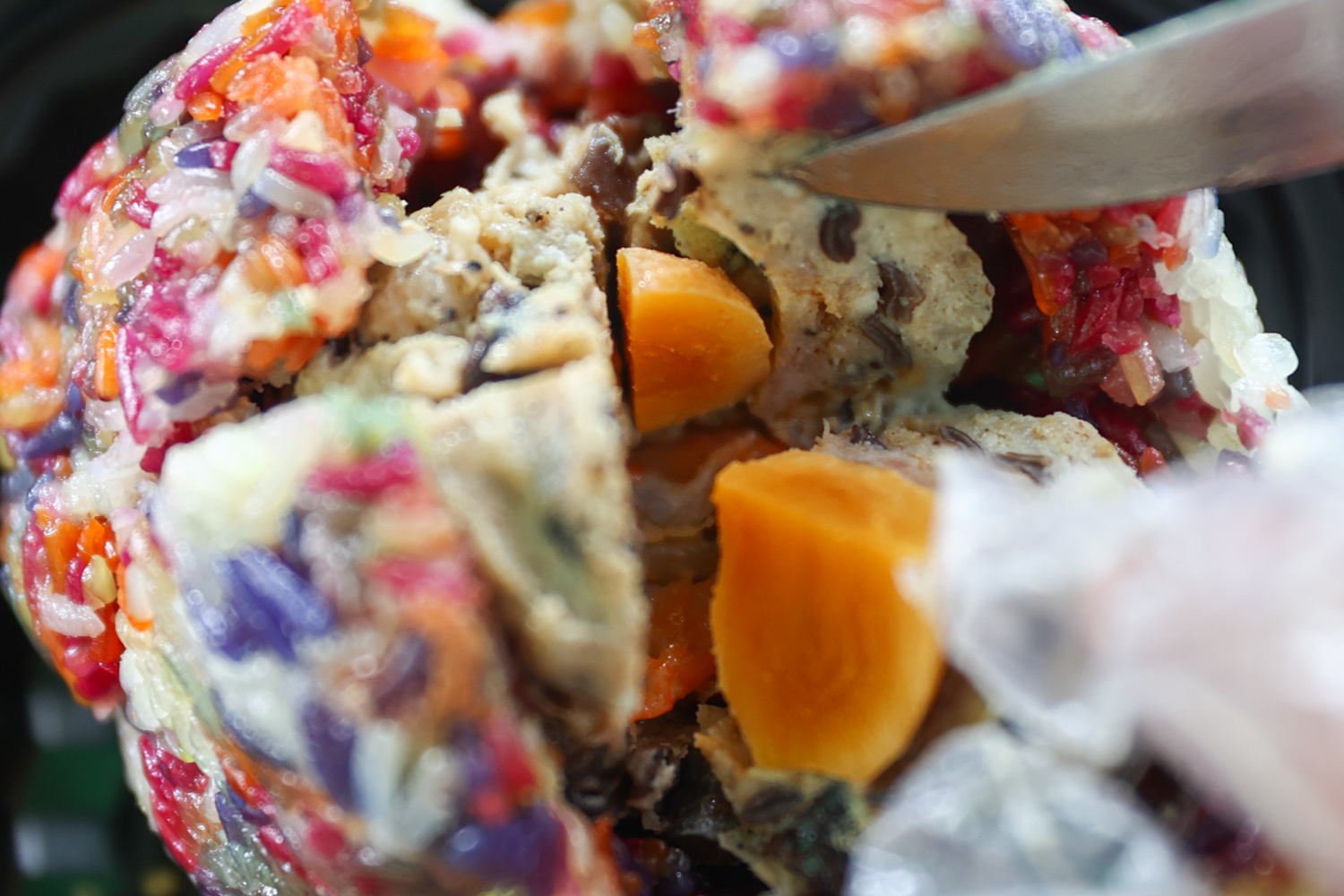 |
The vibrant colors of the sticky rice are made from natural ingredients, wrapped in rice paper, and tied with pandan leaves. Photo: Quynh Tran
"Naturally dyed sticky rice has varying shades, especially the grains at the bottom of the pot, which are lighter due to more contact with water. If chemicals were used, the color would be uniform and unusually bright," he explained. According to Tuan, if you soak a pinch of the sticky rice in water for about two hours and the color fades, it's natural.
At 3 a.m., the stove fires up. After soaking and draining, the colorful rice varieties are steamed together. Each batch takes almost two hours to cook, longer than regular white sticky rice. The rice is cooked over low heat to prevent the colors from fading or bleeding into each other. The stall uses about 5 kg of sticky rice daily.
While the rice cooks, Tuan prepares the fillings: mashed mung beans, steamed taro, grated coconut, and sesame salt. He has also created some special fillings like egg cade and matcha to cater to younger tastes. The rice paper wrappers are ordered from the Son Doc craft village in Ben Tre.
The sticky rice is spread thinly on the rice paper, then topped with fillings according to the customer's preference. Each serving includes grated coconut, sesame salt, or coconut milk, then rolled and tied with dried pandan leaves. The vibrant colors of the sticky rice and the layered fillings make the dish even more visually appealing. A serving costs between 15,000 and 25,000 dong, depending on the filling.
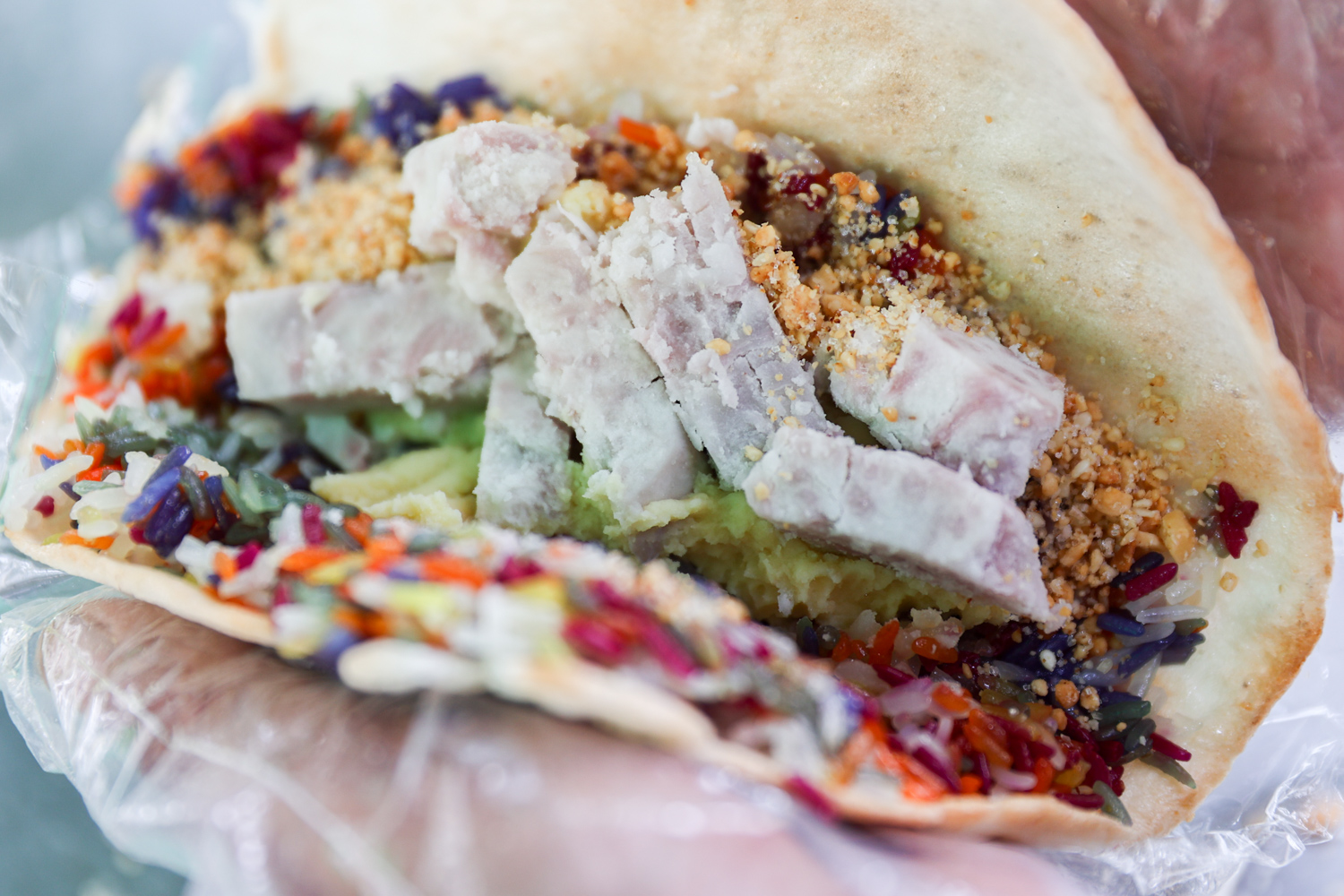 |
The jackfruit sticky rice is quite elaborate, served with coconut milk. Each serving has 3-4 jackfruit segments and costs 20,000 dong. Photo: Quynh Tran
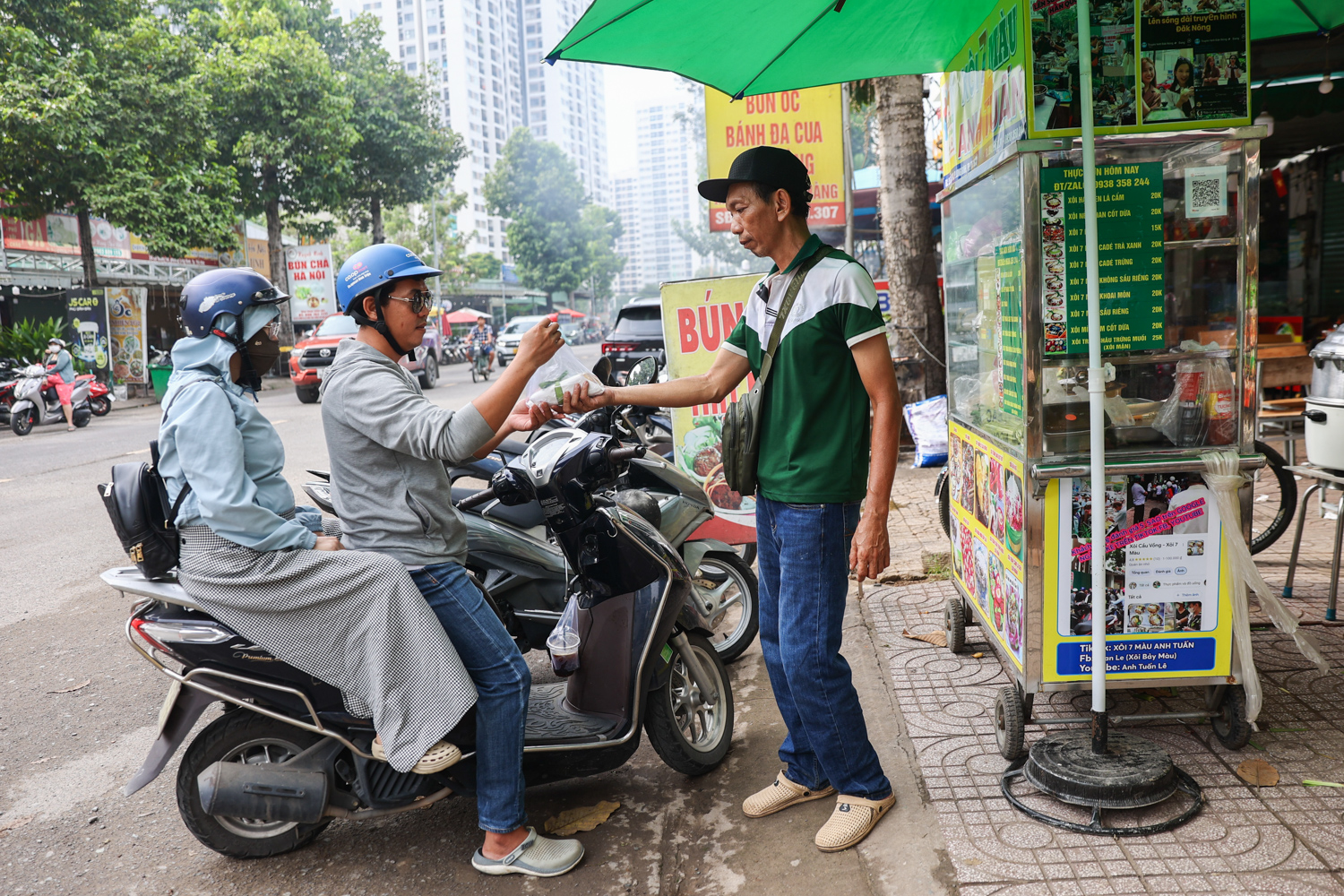 |
Salted egg tapioca pearl sticky rice costs 25,000 dong and is the only savory option. Photo: Quynh Tran
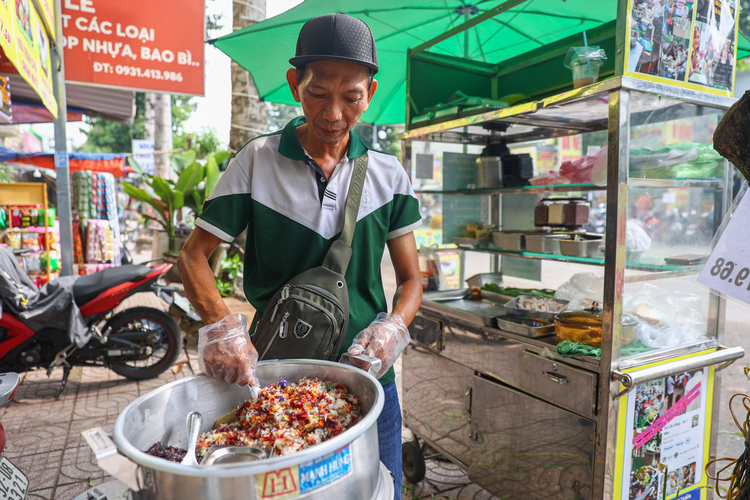 |
Sticky rice wrapped in Son Doc rice paper from Ben Tre. Photo: Quynh Tran
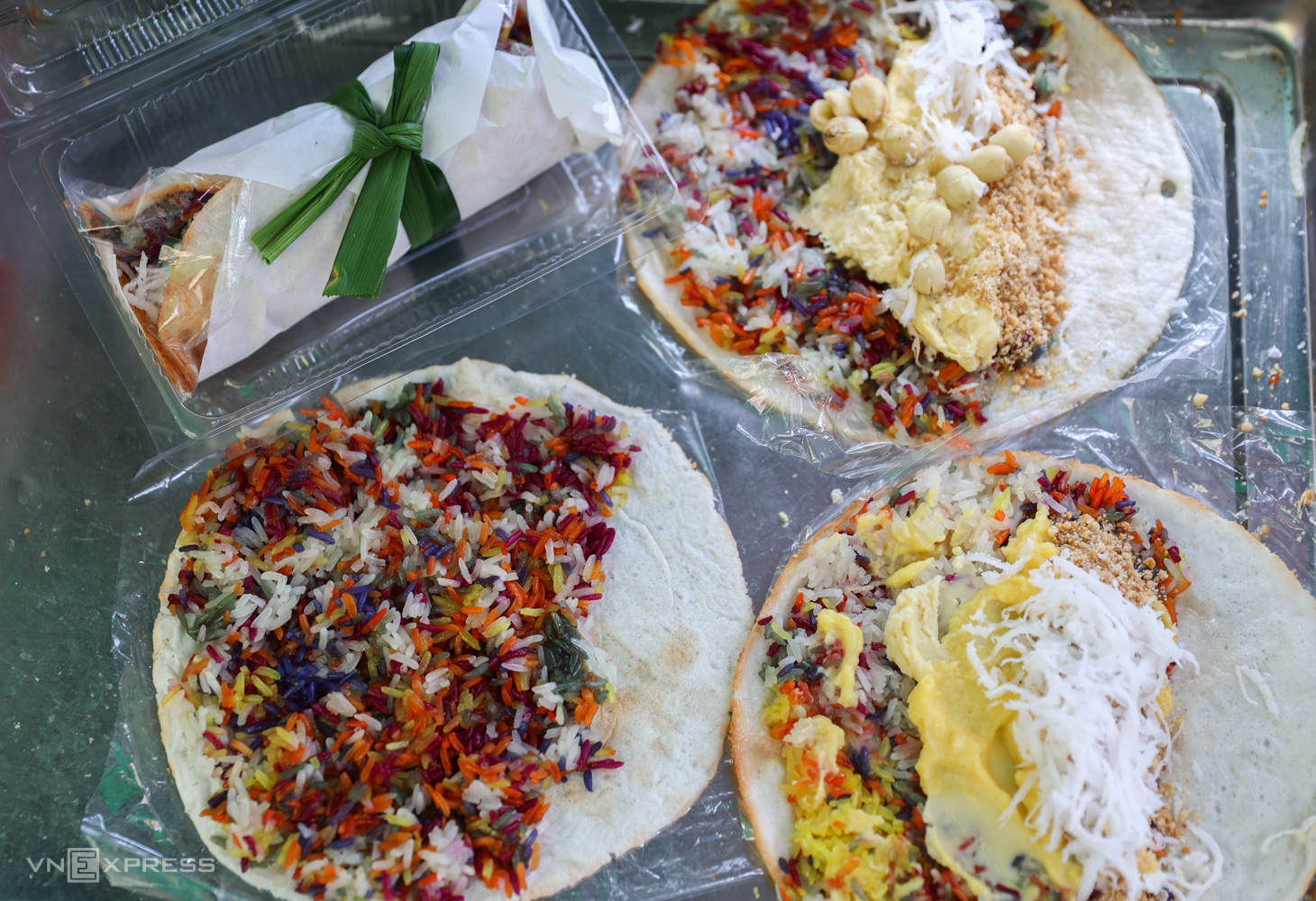 |
The stall sells about 80-90 servings per day. Photo: Quynh Tran
The stall offers about 10 varieties, including seven-color sticky rice, magenta lotus seed, coconut black rice, green tea cade, egg cade, durian, taro, jackfruit, and salted egg tapioca pearl. Tuan says the cade filling, with its many variations, is a key ingredient that creates the unique flavor. His cade has a thick, soft texture, a rich flavor, and a color similar to flan.
He sells 80-90 servings a day, with durian and lotus seed sticky rice being the most popular, accounting for half the sales. All options are sweet except for the salted egg tapioca pearl. "Customers can also choose to mix different fillings according to their preferences," Tuan added.
The stall is busiest from 7 a.m. to 9 a.m., often with customers crowding around to grab a bite before work or school. Each serving is prepared quickly, within half a minute, but because Tuan doesn't have any help yet, customers sometimes have to wait.
For almost a month, Quoc Nam has been stopping by on his way to work to buy durian or lotus seed seven-color sticky rice for breakfast. On weekends, he buys it for his whole family. "The sticky rice is fragrant, colorful, and not too sweet. My child loves the durian flavor, it's so rich. However, the rice grains are still a bit dry," Nam commented.
Passing by the stall, Pham Hong was intrigued by the unusual name and decided to try a serving. "The sticky rice looks beautiful with its colors and presentation, has many fillings, and is quite affordable compared to other breakfast options," Hong said. According to her, it's hard to find this type of sticky rice in Saigon. The way it's wrapped in rice paper reminds her of the sticky rice she used to eat as a child.
Thanks to its rarity, unique flavor, and Tuan's friendly service, he has gained many regular customers despite having just opened. After 9-10 a.m., the stall closes, and any remaining portions are sold online. The stall is located on a main street, making it easy to find with ample parking.
How to make seven-color sticky rice. Video: Quynh Tran
Quynh Tran



